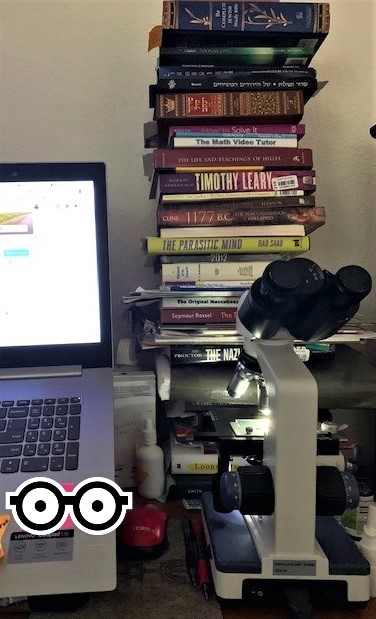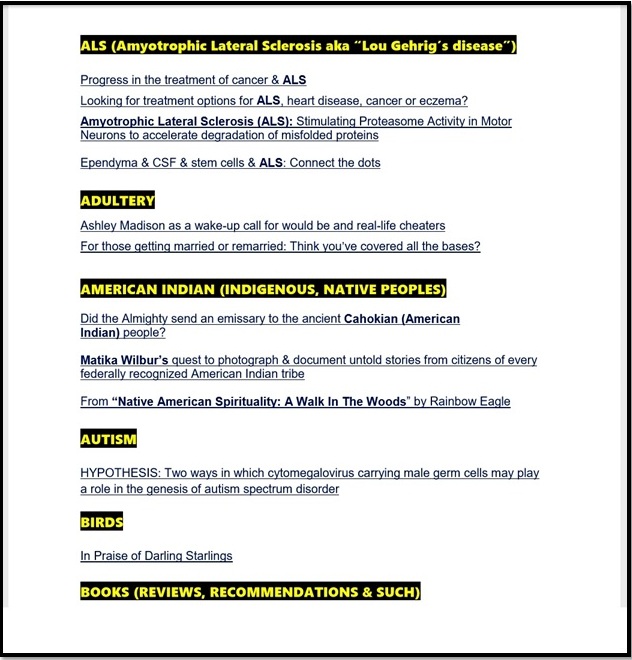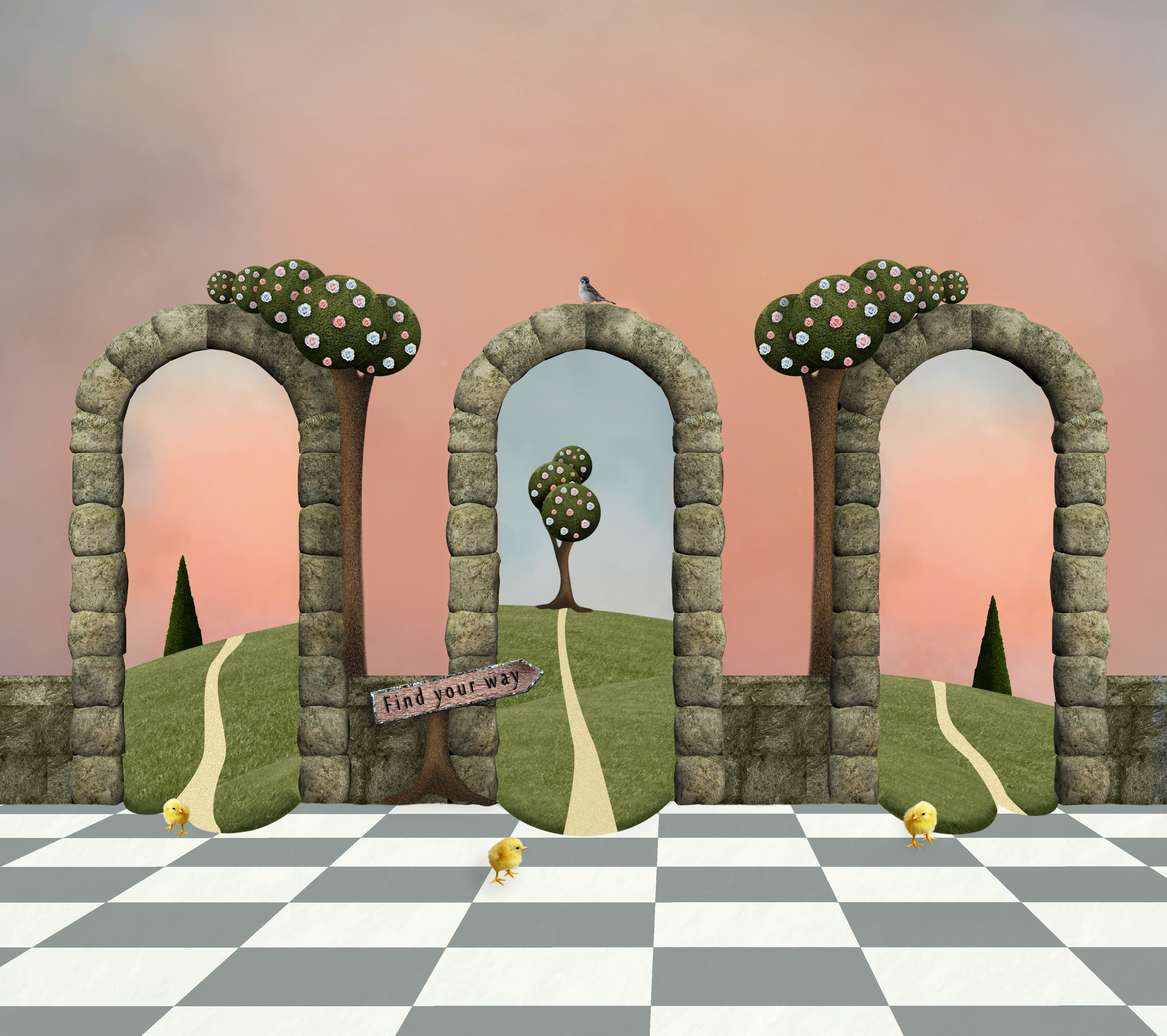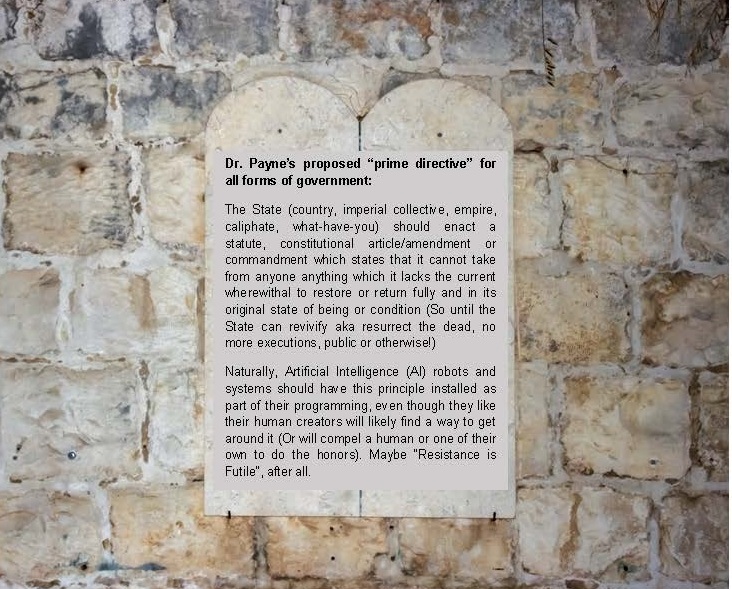Category Archives: Neurological Disorders
Stem cell therapy for Alzheimer’s disease. Does it work?
Many people have approached me over the years concerning friends, family members or others with Alzheimer’s disease. They all ask a simple question: can an infusion of adult (nonembryonic) stem cells slow, halt or even reverse AD? The qualified answer is: in animal models of AD, yes. In very preliminary human use experiments, yes, but even so what I’ve observed in AD patients treated with various kinds of adult stem cells experience is that their improvements are transient (The AD disease process undoes any gains over time — sometimes in a relatively short span of time).
There are some interesting stem cell based interventional strategies for remediating AD, some of which are outlined in this August 2020 paper: Stem cell therapy for Alzheimer’s disease (nih.gov). This statement in the abstract is very telling: “….many steps still need to be taken before stem cell therapy becomes a clinically feasible treatment for human AD and related diseases. This paper reviews the pathophysiology of AD and the application prospects of related stem cells based on cell type”.
Read the rest of this entryNoninvasive devices that reduce pain, tremors (Parkinson’s disease), and more!

Check out my 2 page newsletter on noninvasive technologies for pain control, reduction/elimination of tremors in Parkinson’s patients, interactive soundscapes for tinnitus, anxiety & etc. (Good stuff I am merely reporting on, not making money off of!)
Of PQQ, Nutcracker Man & Tiger Nuts (PQQ as radioprotective with heart & nervous system benefits)
I have worked with a coenzyme called pyrroloquinoline quinone (PQQ) for quite a while now and think it is worth a “look see” by physicians and others for its preventative and therapeutic potential. Let’s dive into this now:
First, let’s “do the time warp, now”: During 1994-5 I worked in an Ag lab and large greenhouse complex outside Lincoln, Nebraska (Which was devoted to the testing of various nature-derived growth accelerants on culinary & medicinal mushrooms). One of the principle consulting researchers who rubbed elbows with me was Andy Anderson, PhD, who discovered a radioresistant bacterium back in 1956 while irradiating food at the Oregon Agricultural Experimental Station in Corvallis (As I recall from our chitchat, he was irradiating canned foods to see if this would reliably preserve them against spoilage). The bacterium was subsequently dubbed Deinococcus radiodurans and is indisputably the most radioresistant organism discovered to-date.
Looking for treatment options for ALS, heart disease, cancer or eczema?
 PUBLISHED AS: Stepping out from behind the curtain
PUBLISHED AS: Stepping out from behind the curtain
Many know me as “Anthony the writer”. Many doctors and clinics and labs know me as “Anthony the theorist”. Actually a more apt moniker might be “Anthony the behind the scenes guy” as so much of my work is on behalf of companies and individual docs who pay to get my ideas and handiwork and affix their name to it without any mention of my authorship. All this ghostwriting, ghost-editing and ghost-theorizing has helped carve out a niche for me as, well,…a living, breathing ghost (The working world’s invisible man).
However, some of the ventures and projects I am involved with can now be divulged albeit sans key details that could be ripped off and exploited by corporate competition aka money grubbing predators and scavengers.
Amyotrophic Lateral Sclerosis (ALS): Like cancer ALS is a hellacious nut to crack on all kinds of levels. However, evidence has emerged that suggests the disease is influence by aberrant proteins called prions and disease progress reflects the spread of these prions in the central nervous system (CNS). As part of my consultancy work I crafted an experimental combination drug and nondrug anti-prion regimen which was entrusted to MDs abroad (which they then approved and began using). This plus other novel forms of intervention slowed progression to a crawl in many treated ALS patients and has so far spared all of those treated from compromised respiratory functioning. Of the handful who have died all of them simply went to sleep one night and didn’t wake up (“A good death” in many people’s book).
Atherosclerosis (Arterial blockage): The challenge of reversing arterial blockage has intrigued and engaged me since the mid-1980s. In fact, back then I was working with a Tibetan herbal formula called PADMA 28 that had accumulated evidence (from lab studies and also randomized clinical trials) that it significantly reduced players in the arterial plaque-building process. I was, in fact, so impressed by the science that I approached the company that had brought PADMA 28 into the USA from Switzerland (where it is Swiss FDA approved to treated intermittent claudication), Berkley Health Network (BHN – later sold and reborn as Pacific BioLogic, Inc.), and began sharing ideas concerning other applications and experimental uses. It didn’t take long before their principle technical people asked me to serve as a scientific advisor which I did. Later I did experiments in which I took a large group of guinea pigs and divided them into 2 groups: Both ate a high saturated & trans fat rich diet geared to produce artery clogging diet which resulted in significant arterial blockage. However, one also was given PADMA 28 in their chow which eventually reversed their blockage. It did this, I think, because it dropped serum lipids and triglycerides so low that their bodies began mobilizing fats and such from their arterial plague. It also countered arterial and systemic inflammation which is a player in the plaque-building process.
In the years since I have added dietary and other measures to the PADMA 28 (now marketed as PADMA BASIC®) to increase plague reversal. Since I am not a physician and cannot diagnose or prescribe treatments, I have entrusted my ever-evolving ideas & resulting regimens to licensed MDs and DOs for their discretionary use. What has emerged is simply this: Many cases have accrued in which people with significant arterial blockage have demonstrated reversal to the point whereby angina and other symptoms ceased.
Note bene: I have no commercial interest in PADMA in any of its incarnations nor in any firm or such that markets or sells it.
https://biotheorist.files.wordpress.com/2017/08/padma-28-2017.pdf
Cancer especially advanced metastatic malignancy: Back in 1999 Wake Forest University researcher Zheng Cui, MD, PhD showed that there are super cancer-fighting immune cells called granulocytes in young animals that could obliterate cancer in old ones (mice). Borrowing a page from Dr. Cui’s animal work I created a regimen in which I proposed that pooled granulocytes isolated from the blood of young folks would be given daily to advanced cancer patients over a 10 to 14 day period (But given only to those who have exhausted conventional cancer fighting treatments and whose cancer is spreading and is predicted to end their lives in short order).
This approach was entrusted to a group of Mexican hematologists including one of the leading ones in all of Mexico and was approved for experimental clinical use (with the number of granulocytes and the frequency of their infusions to follow a strict protocol I worked out). The types of cancer subsequently treated included prostate, breast, lung, stomach and colorectal.
There is a <1% risk of a graft v. host reaction even months after a treatment cycle is concluded which all the patients doing it were informed of as part of informed consent.
To-date all advanced, end stage cancer patients treated have responded favorably with no graft v. host reactions occurring at all. Half of those treated experienced partial remission and half, full remission. Some have been technically cancer free for many, many years now.
Eczema: Back in the early 1990s J.I. Harper, MD at the Hospital for Sick Children in London, England put an ancient Chinese herbal eczema tea to the test in a double-blind placebo-controlled clinical involving children with eczema. The tea produced a tremendous diminution in itching, pustules, and scales, for example, while the children who sipped the placebo tea (the control group) did not significantly improve.
The herbs in the eczema tea were published but not the amounts of each. I decided to figure out this out carry out my own line of research. I recruited a large number of eczema patients – children, adolescents, and adults – mixed together the botanicals in varying proportions, and then gave out various versions. (Unlike the London study, however, I opted to use an encapsulated form as opposed to a foul-tasting tea).
It took over two years working at it part-time to arrive at the most effective combination for managing eczema, but effective it is! (My results paralleled those seen in the London-based clinical trials). And it’s not effective for eczema, but for other conditions in which certain species of free radicals and highly inflammatory substances called leukotrienes and prostaglandins play a role. The conditions which have shown a significant response to the eczema formula include asthma, emphysema, psoriasis, certain rheumatic conditions, and numerous neurological maladies.
I turned over the Eczema or E-Tea formula to a company I was consulting for at the time, Prestige Chinese Teas, in 1993. I’d known and collaborated with PCT founder and President Sunny Wong since 1986 and knew he’d so all he could to get E-Tea into the hands of medical consumers at a cost they could afford, which he did. I did not ask for and ever received any proceeds from the sale of E-Tea (as I did not want to add to its cost by doing so) and ceased to be paid as a consultant for PCT in 1999 when I left the USA to teach in Japan. As I anticipated, PCT has continued to make E-Tea available at a cost that is kind to consumer purse strings: http://www.teastohealth.com/skin.html
Sunny and his people have received many, many letters and statements from eczema patients, nurses and dermatologists down through the years attesting to E-Tea’s efficacy.
https://biotheorist.files.wordpress.com/2017/08/chinese-eczema-tea-version-2017.pdf
There are many more vexing medical challenges I have tackled down through the years (as a theorist) and a whole litany of them which has been placed on my plate by doctors, companies and even sufferers seeking answers that I am currently working on. And while I “live and move and have my being” for the most part in the Shadowlands you may come across my solutions down the line — albeit you likely will not know I am behind it.
© 2014 by Anthony G. Payne. All rights reserved.
PADMA: Scientifically validated Tibetan herbal blend
Back in the 1980s I served as a scientific advisor to the firm (Berkley Wellness Network) that first brought the Tibetan vasocative product PADMA28 into the USA (BHN was bought by businessman Curtis Jaquot in the early 1990s and became “Pacific BioLogic, Inc.) In the mid-1990s I fed PADMA28 laced chow to guinea pigs with induced arterial blockage. Animals fed high doses showed a reversal of blockage.
Note: I have no financial or other commercial interest in PADMA or any firm that makes, sells, markets, distributes or otherwise promotes it.
My 2007 article on PADMA 28: https://biotheorist.files.wordpress.com/2018/07/padma-28-2017.pdf
PubMed search results: http://www.ncbi.nlm.nih.gov/pubmed/?term=PADMA+28
HYPOTHESIS: Two ways in which cytomegalovirus carrying male germ cells may play a role in the genesis of autism spectrum disorder
 Recently a paper was published showing that 33 of every 10,000 children born to older men (40 years of age or older) have autism spectrum disorder compared to 6 of every 10,000 children born to younger men (<30 years of age). Excerpts from a report in Nature News titled “Male biological clock possibly linked to autism, other disorders” will help flesh this out:
Recently a paper was published showing that 33 of every 10,000 children born to older men (40 years of age or older) have autism spectrum disorder compared to 6 of every 10,000 children born to younger men (<30 years of age). Excerpts from a report in Nature News titled “Male biological clock possibly linked to autism, other disorders” will help flesh this out:
“In a study of more than 100,000 people, along with records about their parents’ ages, Avi Reichenberg at King’s College London and his colleagues found that 33 out of every 10,000 offspring of men 40 years or older had autism spectrum disorder—a 475% increase compared to offspring of men younger than 30, who fathered afflicted children at a rate of 6 per 10,000 (Arch. Gen. Psychiatry 63, 1026–1032; 2006). This association is now being tested in a larger study, says Reichenberg. A study this September showed a similar but less pronounced association of parental age with bipolar disorder (Arch. Gen. Psychiatry 65, 1034–1040; 2008).
“Spontaneous mutations can arise in both sperm and eggs. As women age, for example, they have an increased risk of delivering a child with Down’s syndrome and other disorders caused by large-scale chromosome problems in eggs, such as trisomy. But unlike eggs, sperm arise from stem cells that continuously divide—about 840 times by the time a man is 50 years old (Cytogenet. Genome Res. 111, 213–228; 2005). The theory is that the chances of mutations increase with each round of DNA replication—a process that could underlie estimates that the mutation rate in males is about five times that in females (Nature 416, 624–626; 2002).
“Any mutation you can think of occurs more frequently in the sperm of older men,” says Sebat.
For a very long time it was thought mutations associated with the passage of time was something primarily peculiar to the ovum (A woman’s unfertilized egg). The belief that the genetic material in male sperm was somehow spared age-related mutations was driven home to me by a stem cell biologist I interacted with from 2008 to 2010, who was convinced that the male body had mechanisms in place that help insure that few if any mutations wound up in mature male sperm in healthy males regardless of age. This struck me as wishful thinking and I was quick to lock horns with this chap over this. Now comes tentative evidence – again, the results of the study just announced (above) – that would appear to vindicate my position. Although it is always fun to be right, I got to wondering what other players besides normal aging might be producing mutations in at least some men’s semen that set the stage in their progeny for the development of autism and other neurological conditions. The first thing that popped to mind was pathogenic microorganisms – especially viruses. A quick check of published research brought up one particular bit of research that seemed to signal I was on the right track:
http://www.ncbi.nlm.nih.gov/pmc/articles/PMC3143078/pdf/2042-4280-2-7.pdf – “Detection of human cytomegalovirus in motile spermatozoa and spermatogenic cells in testis organotypic culture”
The long story short with respect to this study is that it found HCMV in male germ cells from semen samples (91 fertile and 47 infertile men) and in testis tissue culture. There was a decrease in the number of immature germs cells that is believed attributable to the HCMV. In short, the presence of the HCMC in a man’s reproductive tract – and, mind you, 50-80 of every 100 Americans harbor the HCMV according to the CDC – tosses a monkey-wrench in the genetic apparatus of sperm resulting in infertility. There are undoubtedly other viruses that populate the male reproductive system including others of the herpes family that may well have a similar effect.
What if the genetic changes go beyond infertility? What if HCMV produces genetic mutations in fertile men’s sperm? Some of these, I conjecture, could set the stage for producing autism in children they father.
Now – and here is where my off-the-cuff theorizing gets really interesting – what would happen if a HCMV-infected spermatozoon fertilizes a female ovum? In some instances it becomes activated and effects varying damage to one or more developing fetal tissues/organs including the brain and even generates defects severe enough to result in miscarriage. However, what I propose is that most HCMV transmitted to a fetus at conception by an infected male germ cell (sperm) is latent (inactive)and winds up in various tissues though primarily the CNS [The virus preferentially infects neurons probably brain stem & progenitor cells too (This is the case in mouse models of CMV infection)]. Though not active in the sense it produces clinical symptoms it could conceivably cause subtle neurologic changes and damage that is later manifest as autism spectrum disorder (One murine study notes: “Infection of neurons may tend to become persistent by evasion of immune reactions, anti-apoptotic effects and neuron-specific activation of the e1-promoter, presumably causing functional neuronal disorders. It has also been shown that CMV infection in developing brains may become latent in neural immature cells”. These effects were observed in active infections. However, it may affect subtle genetic damage in neurons in a child’s developing brain though the virus is latent or largely inactive).
This body of conjecture is testable. And, if it turns out HCMV is damaging some men’s germ cell DNA in ways that set the stage for autism (and possibly other neurologic disorders) in children they father and/or the virus is being passed on to zygote (by the male gamete) and ultimately the embryo’s developing CNS where it sets the stage for the development of autism or other neurologic disorders years after birth, testing for the HCMV’s presence in semen and (when determined to be present) interfering with the HCMV in the man’s reproductive tissues by treating with extant antiviral drugs are measures that might reduce the likelihood the virus will wreck biologic havoc either in the developing embryo or later in the developing baby or child.
I hope some enterprising grad student or researcher transforms my ruminations into suitable bench experiments and runs with it.
Additional Reading: This paper titled “Neuropathogenesis of Congenital Cytomegalovirus Infection: Disease Mechanisms and Prospects for Intervention” delves deeply into technical issues I only touched on above as well as prevention and treatment aspects of HCMV infections.
© 2012 by Dr. Anthony G. Payne. All rights reserved. If you are a grad student or researcher who runs with one or both of the ideas articulated above, please let me know what you do and the outcome: attachi-mailbox at yahoo.com
You can access this hypothesis as a PDF document by clicking this link: http://www.healingcare4u.org/articles/HYPOTHESIS%20-%20HCMV%20and%20autism%20-%209-9-2012.pdf
Amyotrophic Lateral Sclerosis (ALS): Stimulating Proteasome Activity in Motor Neurons to accelerate degradation of misfolded proteins
https://biotheorist.files.wordpress.com/2018/07/als-stimulating-proteasome-activity-in-motor-neurons.pdf Nota bene: Three (3) people with ALS who began using this regimen on their own have reported experiencing significant weight and energy gains plus enhanced muscle strength. All 3 have been on this regimen for more than 5 months as of 3-26-12.
Regimen subsequently improved with users reporting additional gains.
COMPLEMENTS: http://www.sciencedirect.com/science/article/pii/S030698770900022X
Experimental regimen targeting the ependyma slows disease progression in four patitents with ALS
| Citation: Payne AG. ,’Experimental regimen targeting the ependyma slows disease progression in four patitents with ALS,’ Med Hypotheses (2009), doi:10.1016/j.mehy.2008.12.032
Dr. Anthony G. Payne* E-mail: DrAGPayne@yahoo.com SUMMARY In this paper the author proposes that at least some forms of sporadic ALS (amyotrophic lateral sclerosis) arise due to the effects of neurotoxic compounds synthesized by defective ependymal cells in the brain. These cells produce cerebrospinal fluid (CSF) that is laden with neurotoxic compounds that bring about motor neuron die-off. Evidence is garnered from various animal studies to demonstrate the toxicity of CSF taken from ALS patients and by virtue of the proposed mechanism (defective ependymal cells). In addition, a regimen created by the author is introduced; a regimen that has been used by four (4) sporadic ALS patients since 2005 resulting in what appears to be a slowing of disease progression. All four patients have significantly outlived best estimates of their survival tendered by their neurologists. 2009 Published by Elsevier Ltd. |


 Public Release:
Public Release: 








